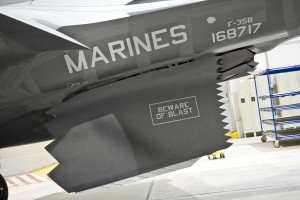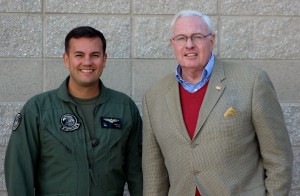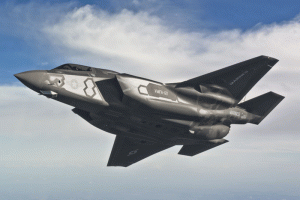2012-11-29 Second Line of Defense visited MAWTS during the second week of November 2012.
We did so knowing that the Marine Corps is focusing on the concurrent development of tactics and training with operations.
In part, that is why the F-35 Bravo is being stood up at MCAS Yuma, the home of MAWTS.
We visited MAWTS last year to discuss the evolution of training and tactics associated with the V-22 as well as the F-35.
https://sldinfo.com/preparing-for-the-f-35b-transition-mawts-re-shapes-its-curriculum/
MAWTS is where the Marines develop tactics and training for the various aviation assets working with overall Marine Corps operations. With the Marines integrating aviation into overall operations is the core operational reality. At MAWTS, the Marines shape their approach to innovation as they move forward, notably with new systems, or newly configured systems.
The squadron at Yuma will shake down the aircraft and get it operational.
As they do so, the pilots using the plane will work closely with MAWTS in shaping the new tactics and training associated with the aircraft. Because this aircraft is a bundle of Harrier, Prowler, and F-18 capabilities with its own revolutionary foundation to doing air operations, the impact of using the aircraft will be central to the evolution of tactics and training.
Notably, Prowler pilots have been added to the MAWTS team in preparing for the F-35. As one MAWTS instructor put it: “Prowler pilots are information warriors and this is a core element of what the F-35 is all about.”
With MAWTS working closely with the squadron, the development of tactics and training WHICH ARE AN INHERENT PART OF DEVELOPMENT for the plane, the squadron and the program, will be a center bull effort.
And this will be significant as the squadron moves out.

In a discussion with Clint “Boo Boo” Weber, the head of tac air at MAWTS, we discussed the Marine Corps approach. Weber is Tac Air Department head at MAWTS, which means he works with all the fixed wing aircraft used by the USMC, which would include F-18s, Harriers, EA-6Bs, KC-130s and UASs.
SLD: How does MAWTS look at the deployment of F-35s at Yuma?
Weber: We anticipate IOC next year. I think we’re on time to do that. There’s some indicators that in some ways we may be even be a little bit ahead of where we thought we were going to be about 12 months ago.
Obviously, that’s cautiously optimistic, but we’re certainly on timeframe for IOC and we believe that the first deployment to Japan will occur in accordance with that timeline as well.
VMFA-121, the Green Knights has stood up already, but will receive its first aircraft on November 20th. And we’ll continue to receive aircraft at a substantial rate such that they should be fully stood up by next spring with 16 total airplanes.

SLD: What will be the approach of MAWTS to the operational squadron?
Weber: We’re hopeful that by having the squadron right out here at Yuma next to our weapons school, Marine/Aviation Weapons and Tactics Squadron 1 that we can work on concurrent tactical and operational development. And we are part of the conversation on concurrent developmental tests and operational tests at Pax River and Edwards and Eglin and then at China Lake.
But as that goes on concurrently, we are flying and developing tactics for current software and current capability with fleet aircraft with the aid of MAWTS-1 instructors here.
For us to be right next to them, that’s going to be extremely important when we start talking about tactics evaluation for that squadron that deploys in the next two years.
SLD: Talk about the impacts, which you see from the F-35 on Marine Corps tactics and training?
Weber: that’s really a key point.
What I see as really our primary responsibility here is we start taking a look at initial tactics evaluation or development of tactics.
In the Marine Corps, we’re looking to IOC this airplane get it airborne in numbers with its current capability in an environment where we can start to work it into the game plan. Without using the aircraft, it is impossible to develop the aircraft into its operational capabilities and determine its overall impacts on Marine Corps operations.
SLD: What are some of the impacts you see of the F-35B on Marine Corps operations?
Weber: The Commandant has emphasized the return to the sea. The Bravo is a centerpiece of the kind of at sea capability which is central to the Marines.
With more difficult environments to operate in, the F-35B is part of assuring of us of greater capability to operate in a variety of settings.
The Osprey is also a part of this, but the Bravo will not only support operations but be a hammer to knock open holes in difficult operational environments.

It is also enables us to operate in a much wider range of environments.
The Bravo can operate off of a variety of surfaces — ships, airfields, highways and fields.
The Marines have specialized in setting up airfields where there aren’t any. We think this is a core competence, which will be in high demand in the future.
For the U.S. Marine Corps, the F-35B gives us more flexibility on where we can fly it from, which is probably the most important part for us.
SLD: We noticed that you have a broad range of pilots feeding into the F-35. You have Harrier, F-18 and Prowler pilots, to name three. How is that going to shape the culture of the aircraft?
Weber: There’s no doubt that initially when we start talking about the syllabus of the communities that are primarily going to feed into the JSF that you will see change.
You have the fighter attack syllabus and the attack syllabus for the F-18 community and then in the AV8 community. And you need that because you definitely need the pointy-nose guy out there. You’re going to have a high-end platform, fifth generation aircraft that’s going to have some capabilities that are unmatched.
And there’s really only one type of individual that can take advantage of that. That’s somebody from the fighter and/or the attack community.
But there’s some other considerations as well when discussing the F-35.
It is a C2 and Information Warfare aircraft. Our best operators in this world are from the Prowler community, and they are key to shaping the F-35 culture.
For the Marines, such integration is crucial.
We are naval officers, we are Marine Corps officers, but above all we are MAGTF officers.
Which means that once you become a bit more mature, you have to start thinking about not just airspace or battlefields but battle-space. In other words, it’s important that the individual that’s building the syllabus for the F-35 thinks about command-and-control.
Whether you call it cyberspace or information warfare or pushing the right pieces of information to the right places, the F-35 is a centerpiece for Marine Corps thinking about the future.
In other words, you don’t want to put people in charge of training, creating training syllabi, or essentially, creating tactics that are thinking simply at the air operations level. You have to think about this holistically from the MAGTF perspective and not just operationally from the air or from the air for the air.
We have to think operationally from the air for all the other elements of the MAGTF.
The ground combat element, the logistics combat element, and then how that works into the joint arena as well are crucial when we think about tac air in the USMC and at MAWTS.
See also the following:
https://sldinfo.com/the-f-35-squadron-at-yuma-the-next-phase-begins/
https://sldinfo.com/local-arizona-tv-weighs-in-on-the-yuma-f-35-squadron/
https://sldinfo.com/first-operational-f-35-squadron-ceremony-at-yuma-arizona/

